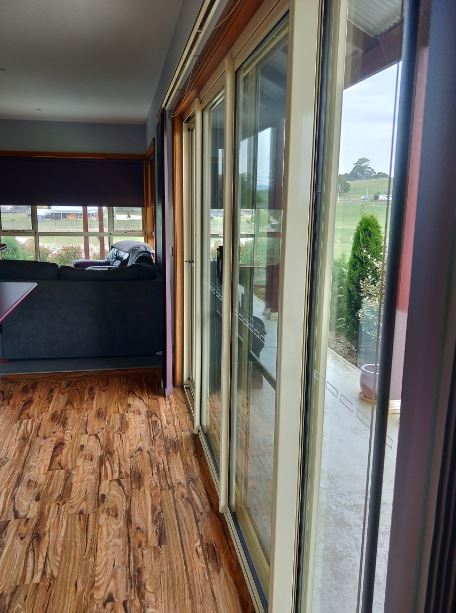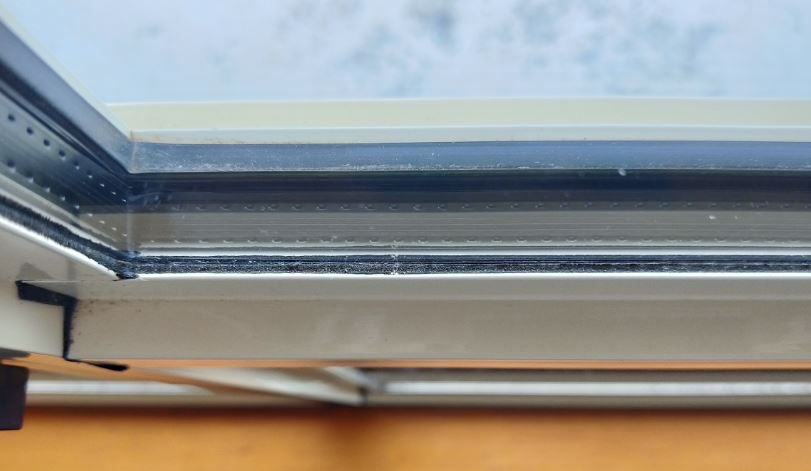 Windows … what are they good for?
Windows … what are they good for?
Well … for a start you can look through them on a rainy day and not get wet.
They allow a home to be filled with light during the day time on a winter’s day whilst separating the occupants from the element outside. For the scientifically minded, they were thought, for a time, to be a liquid.
Highly viscous liquids in a gravitational field like the earth’s 9.8m/sec squared (or 32 feet/sec squared in the old money), will eventually all end at the bottom resulting in the windows having thicker glass at the bottom and thinner glass of the top.
This was thought to be true because many old church windows were thicker at the bottom but that was the result of the manufacturing process at the time. As romantic as it sounds glass is not a liquid.
I accidentally proved that twice as a child simply with the aide of a stray cricket ball. But glass does have some fascinating properties.
A solid material, or at least an amorphous solid, that allows visible light to pass through it is truly an interesting concept. Not only can light pass through glass but heat can be transferred from one side to the other side as well.
Conforming with all of the laws of thermodynamics, specifically the second one which is the law of entropy, glass permits heat to be transferred readily from one side to the other. Now this is a great quality to have if your home is correctly orientated and allows the sun to flood into your home during those cold winter months.
But at night the thermal qualities of your windows become a thermal liability allowing heat to escape reducing the inside ambient temperature. As nature would have it, exactly the opposite happens in the summertime when daily temperatures are hotter outside than is desired inside.
What dilemma to have to deal with, especially if a home is located in a climate zone that experiences the more extreme temperature changes throughout the year. Did I hear someone say “holy heat transfer Bat Man what are we going to do”? Well, for the average Joe six-pack who lives in an area with fairly stable temperature fluctuations, it’s not such a big deal.
But luckily for those who live in locations that experience the more extreme temperature events, someone has to come up with a great idea. The rate at which heat is transferred from one side of a glass pane to the other side is referred to as the U value of the glass.
U-values are measured in w/m2K which is the units of watts per square metre per degree Kelvin or in other words the amount of heat loss through each square metre of material for every degree difference in temperature between the inside and the outside.
The U value of the glass is measured in how many watts of energy per square metre is transferred from one side to the other for every degree Kelvin differentiating both sides. The heat transfer coefficient per square meter is effected by a plethora of factors including the thickness and type of glass. If you haven’t guessed already, working out your windows U rating can become a very complicated task.
Glazing U values can also be measured using the rate of transfer of British Thermal Units per hour per square foot in Fahrenheit. (Btu/hr-sq ft-F) Whatever you use, the lower the number ie the lower the U rating, the least heat transfer occurs.
There now exists a number of different glazing products which vary in U value rating and of course price. The great idea I was referring to is double glazing or triple glazing. Instead of just having just one pane of glass a window may have two or even three panes of glass.
The thermal advantages of using a double glazed window is there a greater difference in temperature from the inside glass and the glass on the outside.
Heat is transferred in three ways, including conduction, convention and transmission. Unfortunately for the thermal properties of windows, convection is the only factor not at play and the law of entropy functions very well with the other two. So to reduce heat transfer from one side of a window to the other side, double glazing is better.
Double glazed windows have a lower U value than a singled glazed window and triple glazed window has an even a lower U value. As a general rule, for every clear pane of glass light has to travel through there is a 10% loss of visible light so multiple glazed windows reduces the amount of light that can enter the room for an equivalent square metre of single glazing.
A reduction in light entering a room may be an understandable disadvantage. As one might expect, triple glazing costs more than double glazing which costs more than single glazing. That’s a further disadvantage. Life is full of compromises and trade-offs but a wise man knows what he wants before he seeks it.
Your home’s location, your tolerance to the temperature extremes, your
bank account and your understanding of the options available to you will
dictate what windows you have in your home . >> LEARN MORE >>>
For those starting out on a new home project remember the saying that “quality is remembered long after price is forgotten”, and energy efficient appliances and windows generally pay for themselves in savings over time. One final suggestion is that if you do have triple or double glazed windows or even single pane windows, make the area where they are located a cricket ball free zone.
John Lynn
suburbanoffgridliving.com

